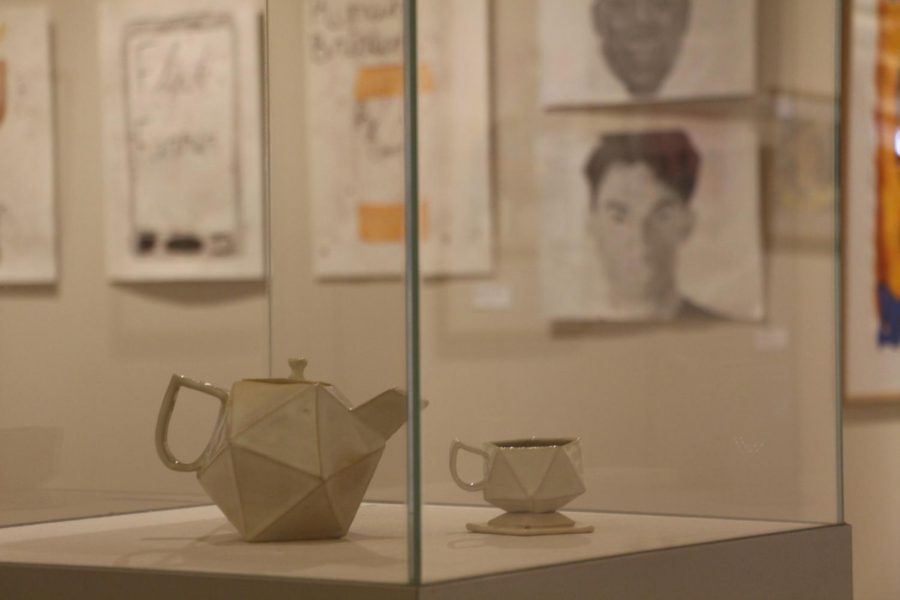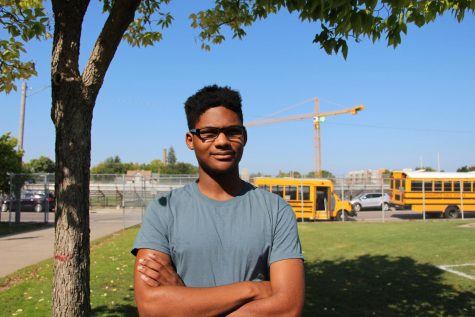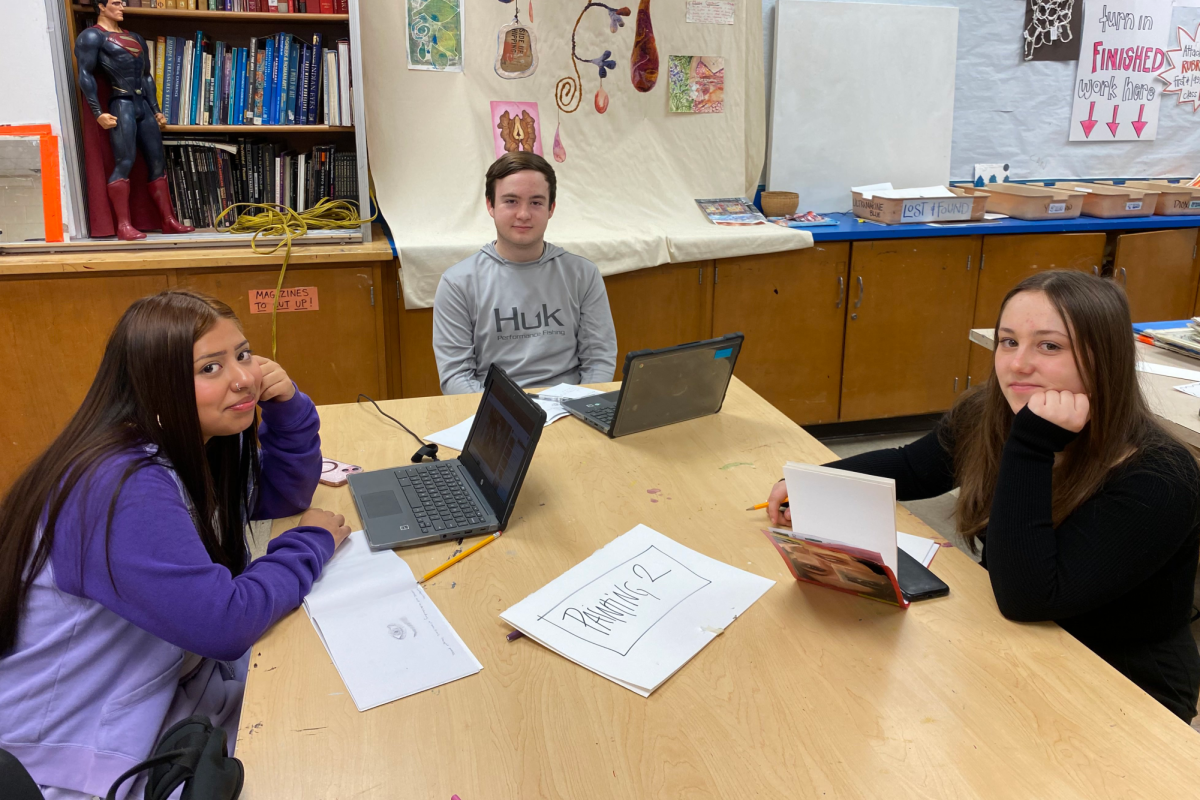South artists show their talent at Viva City
Shown above is Sophia Rapacz’s award winning pots that were submitted into the Viva City competition by David Olson. Rapacz’s art pieces are currently being presented at the Central Library, in downtown Minneapolis. “Sophia does a lot of extra work besides just the assignments in class and so it’s not necessarily a assignment I’ve given, it’s just a student idea,” said ceramics teacher David Olson, who submitted Rapacz’s work.
April 10, 2018
On the February 13th, five high school students were awarded art scholarships in a yearly event called Vivacity. Two of the students who got art scholarships were from South: juniors Gasey Grengs, and Sophia Rapacz. For someone to be part of the competition, they had to be recommended by an art teacher, but this doesn’t mean they need to be in their class to be submitted, so all that you need is to contact a art teacher and ask them to put it in, but there will be a lot of student’s to get by.
David Olson is a ceramics teacher at South, and has been submitting students into the competitions ever since he started teaching, ten years according to Olson. He is also the one who submitted Rapacz into the competition. When someone hears about turning a assignment in to a teacher, they most likely think of it being something the teacher assigned but that doesn’t have to be the case.
Vivacity is a celebration of the fine arts education provided in the Minneapolis Public Schools district, and is part of a bigger program called MPS arts. According to the MPS arts webpage, one of there three goals of Viva City is to, “Expose students to professional artists, organizations, and venues allowing them to work in an artistic capacity that expands their understanding of personal, college, and career opportunities.”
Olson explained that, “Sophia does a lot of extra work besides just the assignments in class and so it’s not necessarily a assignment I’ve given, it’s just a student idea.” Teachers are allowed to turn in four student projects and submit them, they could even submit more than one assignment from a student but Olson didn’t do that this year.
“She did it in her own way that was different from anyone else,” said Olson.
“It’s really hard to narrow it down to only four submissions,” said Olson. When you’re a teacher you have at least two classes through the school year, so for art teachers it would normally be very hard to choose four student’s out of one hundred. The submissions are normally turned in at around the beginning of the school year because that’s when the competition normally happens.
“I got one of the thousand dollar scholarships, which was kind of incredible,” said Rapacz. When they were added to the contest by Olson, they didn’t expect their project to get very high in the competition, but when she did get it, she had a good idea of what she wanted to do with it. Rapacz had said, “if there is a way for me to find a way to make living off of art, i really want to do that.”
Grengs, the second student who got an art scholarship, wasn’t actually submitted by Olson, they were submitted by drawing and painting teacher, Cynthia Berger. “I never heard about it until this year,” said Grengs.
At the end of the assembly, they announced five scholarships, and Grengs was the fourth to be announced, they were one of the winner’s of a five hundred dollar scholarship. “It’s always a good show because it’s always the best of the best,” said Olson,
“It changes a little bit sometimes depending on the amount of funding they have… for example, the award money they have varies from year to year,” said Grengs. “They will have a bunch of small awards one year and a bunch of big ones sometime’s, this year they had a bunch of big ones.”
When there is a project submitted into the competition for getting these rewards, there isn’t any specific type of art they are looking for, meaning it could be a sculpture, painting, drawing, or even a collage.







